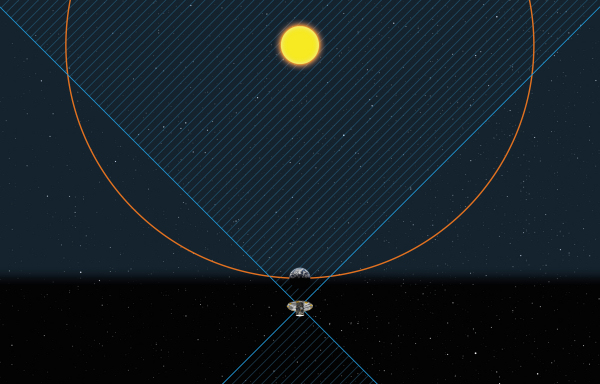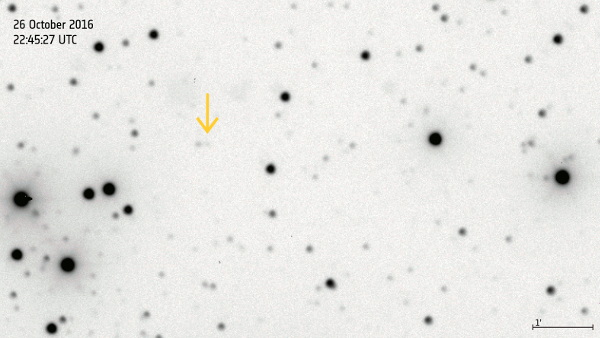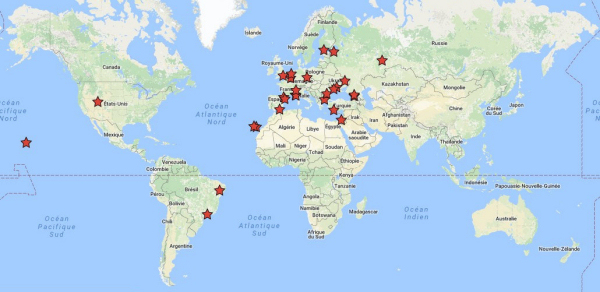Challenges Closer to Home: Gaia's asteroids
Launched in 2013, with scientific operations commencing in mid-2014, Gaia continues ESA's legacy of surveying the stars, following in the footsteps of ESA's Hipparcos, the first satellite to chart the positions of stars. Gaia's observing strategy, with repeated scans of the entire sky, not only allows it to map more than a billion stars (roughly 1% of the stellar population of our Galaxy) but to discover and measure exoplanets, brown dwarfs, distant supernovae and quasars, as well as asteroids, small planets and planetary satellites in our Solar System.
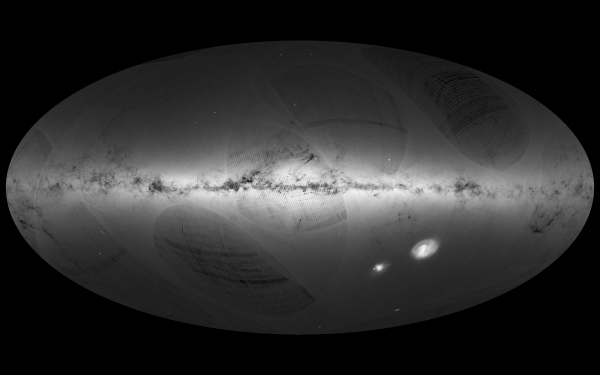 |
| Gaia's first sky map. Credit: ESA/Gaia/DPAC. Acknowledgement: A. Moitinho & M. Barros (CENTRA – University of Lisbon), on behalf of DPAC. |
Some of these other objects can be considered a nuisance to those interested in studying the stars but one person's noise is another person's treasure trove – and asteroids are no exception.
"Solar System asteroids, which appear as points of light in the data, are often considered pests by scientists mapping the stars," explains Paolo Tanga, Planetary Scientist at Observatoire de la Côte d'Azur, France, responsible for the processing of Solar System observations. "They clutter the field of view and present a source of confusion when searching for stellar anomalies. But once asteroids are identified, the observations made by Gaia can be exploited to characterise these valuable rocky bodies, building the richest sample of precise orbits and physical properties ever known. Plus, some new asteroids are also discovered in the surveying process."
Gaia's contribution to asteroid science
At present, there are more than 700 000 identified asteroids in the Solar System, though predictions show there are expected to be many more than this out there, each left over from the formation of planets at the very genesis of the Solar System. Gaia is expected to observe over 350 000 of these time-capsules whilst performing its surveys, providing information of great value to astronomers looking for clues to the Solar System's formation.
"Surveying such a large number of asteroids will facilitate the next step in modelling asteroid populations," continues Tanga. "It will allow astronomers to model the evolution of asteroids from the main belt – which lies between Mars and Jupiter – to the near-Earth region, and its accurate photometry and low-resolution spectra will make modelling physical properties possible at a level which the quality of existing data has never allowed for."
Gaia provides more accurate photometry – the data on which absolute magnitude calculations are based, which are the main source of uncertainty in current asteroid population models – as well as astrometry and spectra for known asteroids.
In addition, Gaia also provides data from swathes of the sky not extensively observed by existing surveys. By surveying these less-charted areas Gaia also has the capability to discover new asteroids, particularly those close to the Sun as seen from Earth and at high latitudes above the ecliptic plane.
In order to contribute to the field by identifying asteroids, gathering useful data about them, and discovering new ones, Gaia relies on advanced software and global partnerships.
Spotting an asteroid: now you see it, now you don't
The asteroids are identified during the mapping process. Mapping stars requires Gaia to survey the sky dozens of times, overlaying images of the same patch of sky from different angles to get a fuller picture. These multiple images are processed by software known as the Initial Data Treatment (IDT) software – which was largely developed at the University of Barcelona and runs at the Data Processing Centre at the European Space Astronomy Centre (ESAC), ESA's establishment in Spain.
The software cross-matches stationary light sources with previous detections of sources in the same position on the sky, deducing that if the same object is identified in several images in the same location, it is in fact a single star captured several times.
However, because they are much closer to Earth, asteroids appear to move against the stars in these images and are often present in one snapshot of an area and then disappear in the next. Any objects that are observed but cannot be matched by IDT to previous observations of that area are, in principle, not stars but Solar System objects – these are, for the most part, Gaia's asteroids.
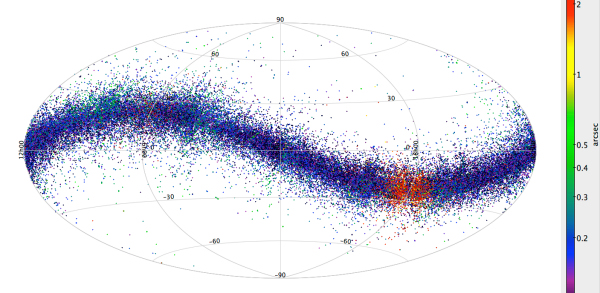 |
| Gaia's asteroid detections. ESA/Gaia/DPAC/CU4, L. Galluccio, F. Mignard, P. Tanga (Observatoire de la Côte d'Azur) |
Tests of the software's ability to detect asteroids – undertaken by a software pipeline designed and implemented by Coordination Unit 4 of the Gaia Data Processing and Analysis Consortium (DPAC) running at the Centre national d'études spatiales (CNES) data centre in Toulouse, France – have compared asteroids identified by Gaia with the expected positions of a sample of 100 000 asteroids whose orbits are already known and have found it is largely very efficient.
"We have found that the detections made by Gaia are in good overall agreement with expectations," explains Benoit Carry, Observatoire de Paris/IMCCE and Observatoire de la Côte d'Azur, France, who is in charge of selecting Gaia candidates for Solar System alerts. "This is very encouraging and means we can confidently alert the astronomy community when we find anomalies expected to be Solar System objects so that they can undertake the all-important follow-up measurements."
FUN for Solar System objects
Once Gaia has found a previously unknown asteroid it is vitally important that follow-up measurements are made rapidly to validate the detection and better measure the orbit and physical properties of the asteroid.
This is especially important as, although each object will be seen by Gaia on average seventy times, for some near-Earth objects it will be only a few times and then the object will disappear from Gaia's field of view. This does not provide enough data to accurately constrain the orbit of an asteroid and, as such, after a few days the uncertainty of the position of the asteroid on the sky becomes so large that it is unlikely it will be found from the ground.
This requirement for rapid follow up was the reason that the Gaia Follow-Up Network for Solar System Objects (Gaia-FUN-SSO) was born, to search for the object sooner, whilst it still has a manageable search area, confirm Gaia's discoveries from the ground, and follow interesting targets.
"The Gaia Follow-Up Network includes almost seventy individuals, spread across the globe, who are poised to receive an alert once a new anomaly, thought to be an asteroid, is observed," explains William Thuillot, Observatoire de Paris/IMCCE, France, coordinator of the ground-based network. "These individuals can then perform the precise ground-based measurements of the positions and movements of the object needed to break new ground in asteroid science. What's more, if the anomaly turns out to be a newly discovered asteroid the network can feed this information into the Minor Planet Center from which the Gaia system can update its ever expanding catalogue of Solar System objects."
The Gaia mission will play an important role in contributing to how scientists understand the physical and dynamical characteristics of asteroid populations, and even discover new ones, but it will rely, like so much of astronomy, on collaboration. Gaia will share and alert the community to interesting data and the Gaia-FUN-SSO network will in turn provide a wide-reaching and systematic follow-up of asteroids, and other Solar System objects, discovered by Gaia.

